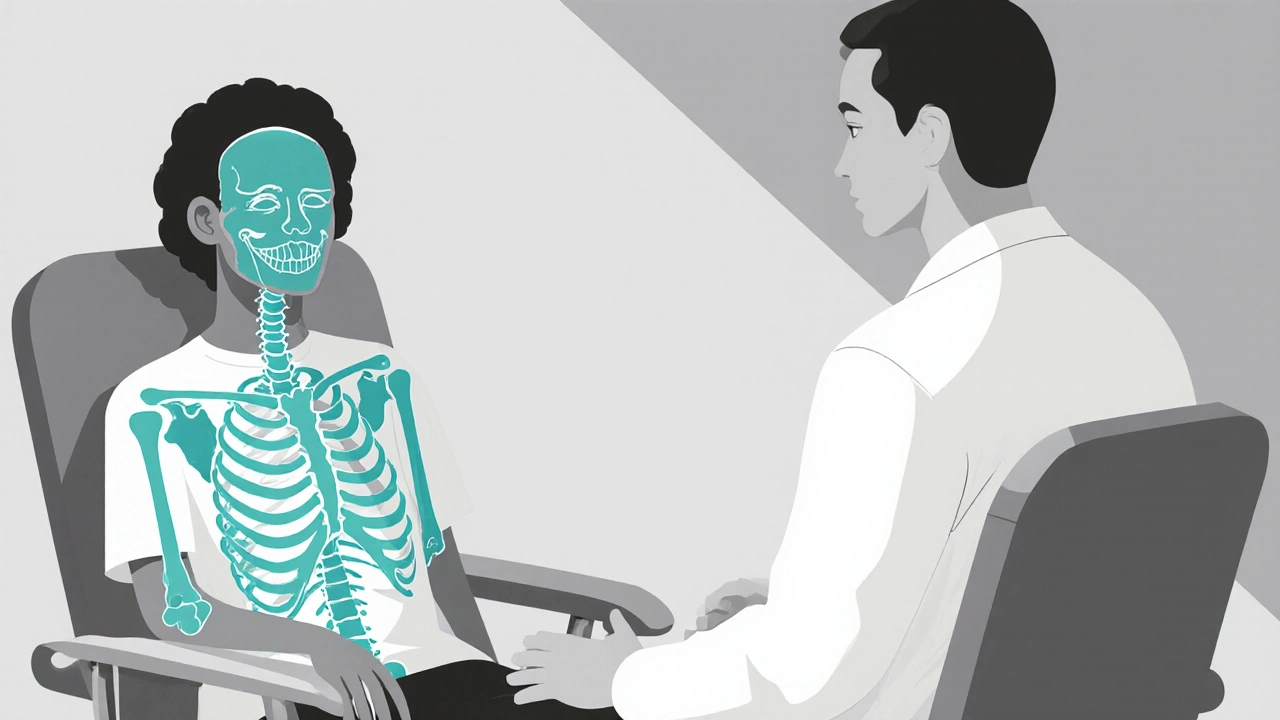Osteoporosis: Understanding the Disease and How to Manage It
When talking about osteoporosis, a progressive condition marked by low bone mass and structural deterioration that raises fracture risk. Also known as bone loss, it mainly affects post‑menopausal women and older men. Osteoporosis isn’t just a medical label; it’s a signal that your skeleton needs extra support.
One of the core indicators of this disease is bone density, the amount of mineral matter packed into a given volume of bone. When density drops below a certain threshold, the skeleton becomes fragile. This drop isn’t random—low calcium, the primary mineral that gives bone its hardness intake is a major driver. Without enough calcium, the body can’t rebuild bone tissue efficiently.
But calcium needs a partner to work well. Vitamin D, a fat‑soluble vitamin that boosts calcium absorption in the gut is that partner. Studies show that adequate vitamin D levels improve bone remodeling and lower the chance of fractures. So the relationship is clear: calcium supplies the bricks, vitamin D hands over the mortar.
Key Factors and Management Strategies
Understanding these links helps explain why osteoporosis treatment often starts with lifestyle changes. Weight‑bearing exercises like walking or resistance training stimulate bone formation, while smoking cessation and limiting alcohol protect bone quality. Nutrition-wise, dairy, leafy greens, and fortified foods push calcium intake toward the recommended 1,200 mg daily for adults over 50.
When diet and activity aren’t enough, medications step in. Bisphosphonates, drugs that slow bone resorption by inhibiting osteoclast activity are the most prescribed class for osteoporosis. They work by reducing the breakdown of bone, allowing the existing matrix to become denser over time. Patients usually take them weekly or monthly, and they’re often paired with calcium and vitamin D supplements for best results.
Another emerging option is denosumab, a monoclonal antibody that blocks a protein involved in bone loss. It’s given as a subcutaneous injection every six months and has shown strong fracture‑prevention benefits, especially for those who can’t tolerate bisphosphonates.
Beyond drugs, regular screening is vital. A simple DEXA scan, dual‑energy X‑ray absorptiometry test that measures bone mineral density can catch early loss before a fracture occurs. The test reports a T‑score; a score of –2.5 or lower confirms osteoporosis, prompting timely intervention.
Risk factors also shape the prevention roadmap. Age, gender, family history, chronic steroid use, and certain endocrine disorders each increase susceptibility. Recognizing these can guide personalized monitoring and earlier lifestyle tweaks.
All these pieces—bone density, calcium, vitamin D, bisphosphonates, and screening—form a network that defines how we approach osteoporosis. By understanding each component, you can make smarter choices about diet, exercise, and medical care.
Below you’ll find a curated selection of articles that dive deeper into each of these topics, from practical nutrition tips to detailed medication guides. Explore the collection to see how you can strengthen your bones and reduce fracture risk today.
Alendral and Cancer Care: How This Bone Drug May Shield Your Skeleton
- Laura Ledas
- Aug, 15 2025
Discover how Alendral works to protect bones during cancer treatment, its benefits, dosage, side effects, and how it compares to other bone‑targeting drugs.
Learn More